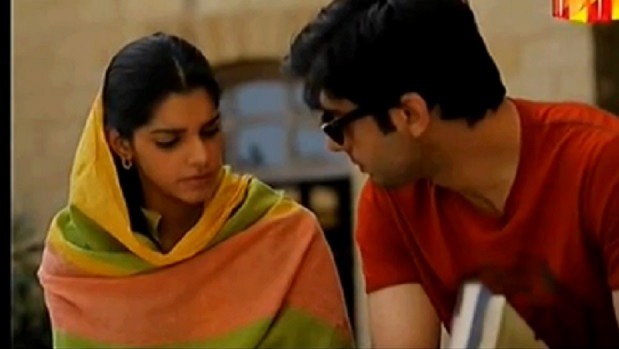“This drama is most popular we have produced so far during the past ten years . . . according to our survey, it has a viewership of more than 10 million in major cities of the country,” said one of the managers of HUM TV, a private Pakistani channel that is broadcasting the drama.
The lead actors in the drama, Sanam Saeed (Kashaf) and Fawad Khan (Zaroon), have become national celebrities during the two months that the drama serial has aired on HUM TV.
Zindgai Gulzar Hai is so popular among Pakistan’s middle classes that when the caretaker prime minister announced he would address the nation on Friday’s prime-time slot–the time when Zindgi Gulzar Hai is broadcast—young fans bombarded the prime minister with messages telling him that he should postpone his address.
The show is based on Pakistani novelist Umera Ahmed’s book of the same name. It is a story about the daily diaries of two polar opposites, Kashaf and Zaroon, who are first tied in the bond of hate, then love and, finally, matrimony.
“At first, the meeting of Kashaf and Zaroon seems like a Pakistani adaptation of Elizabeth Bennet’s and Mr. Darcy’s first encounter from Pride and Prejudice. This, to any female, portrays irresistible on-screen chemistry, and one is smitten by the love story right away,” says Sana Hameed Baba, a columnist for a Pakistani newspaper.
“Pakistan has a 30 million-strong middle class, and attracting a large chunk of this segment of the society through this kind of teledrama means that private channel can attract a lot of revenue,” said Sardar Shahab, a Islamabad-based drama critic.
Kashaf is an average-looking, lower-middle-class girl, and the eldest daughter of an educated woman who serves as a principal in a government school while raising her three daughters. Her mother is an extremely patient woman who shows a quiet faith in God throughout the drama. She also maintains an optimistic attitude towards life despite having faced many hardships after her husband abandoned her for an uneducated woman, simply because she was unable to have a son.
Kashaf vows to restore her mother’s lost pride and improve their financial situation by getting a scholarship in a renowned university. “However, Kashaf’s character is not as simple as it appears. She has waited for years in hopes of a better tomorrow, and she ultimately gives up,” says Sana Hameed Baba. “I wouldn’t call her a pessimist, but she is definitely a nihilist, waiting for each day of her life to fold and unfold as if nothing is ever going to change.”
Strangely, Kashaf is neither an atheist nor agnostic, but just believes God does not pay attention to the struggling classes. But, as they say, good things always come to those who wait. While studying for her MBA, she meets Zaroon, her opposite in terms of character and class. Zaroon is the son of a renowned industrialist and has never had to ask for anything in life. He has everything, including looks, wealth and fame. Despite being raised in an elitist liberal family, Zaroon seems to have a conservative mindset. As the story progresses, we witness how one’s counterpart can serve as a window to one’s fulfillment in life.
The rest of the story revolves around Kashaf, as she achieves one success after another in the drama: from leading an obscure, lower-middle-class life in the poor quarters of the city, she becomes a senior government official after passing the prestigious civil service entry exams. Zaroon follows in her footsteps, also passing the civil service exams.
Pakistani media experts and analysts are floating different theories about why this drama has become so popular in Pakistani society. The most plausible theory explains the popularity of the drama in terms of Pakistan’s changing demographics.
With more and more young people from Pakistan’s middle classes gaining a university education over the past ten years, the reality of unemployment has hit these graduates hard, with many struggling to find their place in society after leaving university. “I think the young Pakistani middle-class people idealize Kashaf, who despite her lower-middle-class background achieves success,” said Sardar Shahab Mustafa, an art critic based in Islamabad.
Second, Pakistani society has become more and more conservative over the past few years, and Pakistan’s middle classes in particular express distaste for the lifestyles often pursued by the more affluent. “In Zaroon, people see an ideal man who comes from a wealthy family but still is conservative just like them,” said Mustafa.

